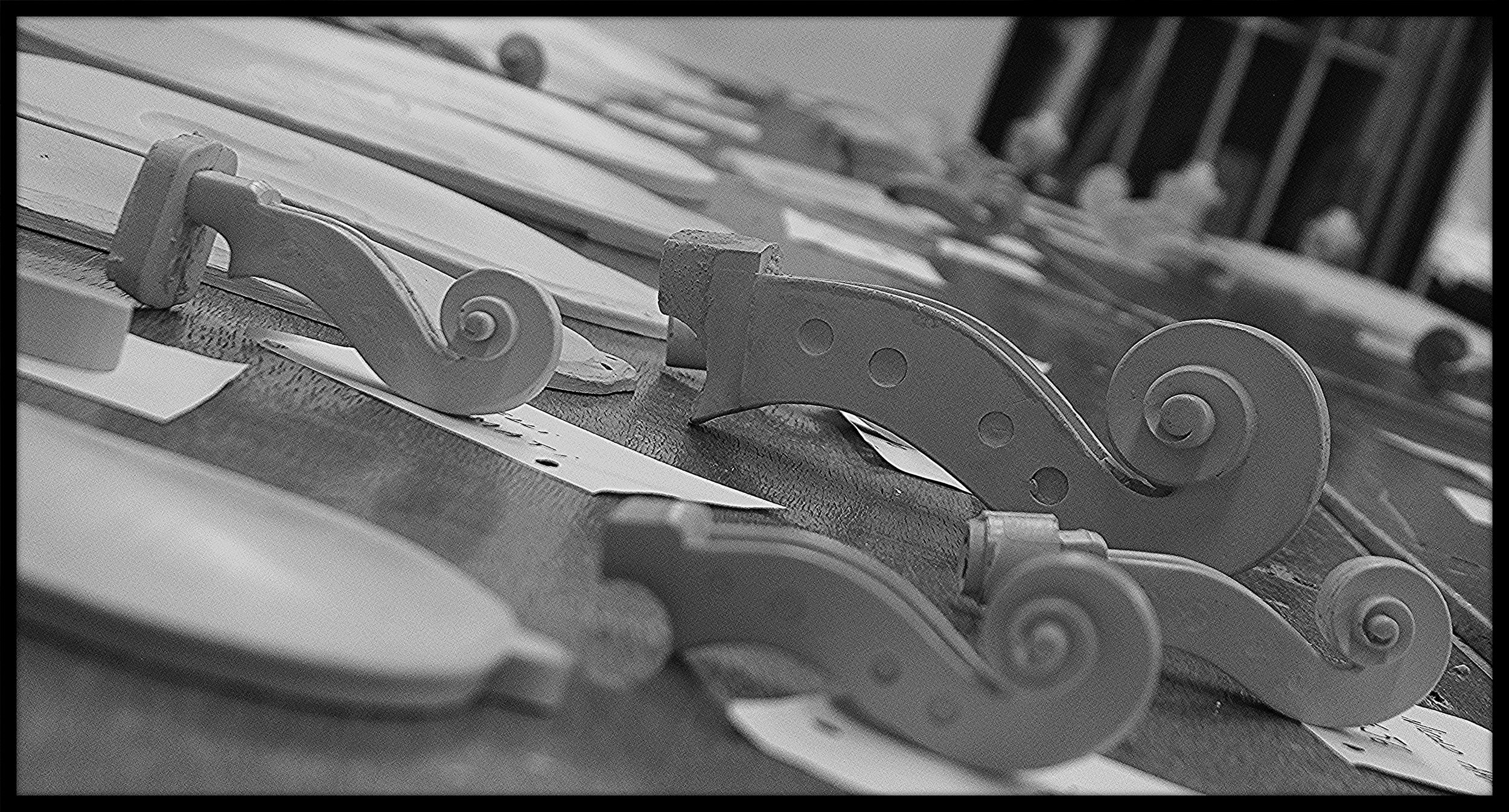Picture by David T. Van Zandt
With my dear colleagues Christopher Ulbricht (right), Camille Hommel (left) and Justin Hess (far left)
This year’s Oberlin Violin Makers Workshop marked the 20th anniversary of this extraordinary event who's visionary director is Christopher Germain.
More than 60 colleagues selected from a pool of international applicants gathered for this intensive, two-week retreat around the fabrication of a specific instrument, blind tests, talks, concerts, and of course, social activities and reinvigorated friendships.
Listening test
The specific instrument created by each one of us for this workshop was a viola. The whole project was called “Obialto 2017”: Ob(erlin)-alto (viola). Thus, all the violas received this common name. Since the 2016 edition of the workshop, participants were given a unique model of instrument to construct through the year and to present it in this edition. We were also asked to keep track of all the data generated through the construction in order to compare processes and final products in the meeting.
This is the graduation map of my viola
All the data went into a complex software, and each instrument underwent a construction examination, a blind test and a frequency test to further feed the software with more data.The comparisons, comments and data generated are an incredible source of information about our own construction processes and techniques—not to mention an enduring learning experience.
This “Obialto” project was conceived and organized by Andreas Hampel, and also made possible by Claudia Fritz and Sam Zygmantowicz, who were in charge of the blind and acoustic tests, as well as by Yi Ping Yang, in charge of the recordings. I’m deeply grateful to them.
Which one is the original?
Another staple of this gathering was the copy of this original Stradivarius (Jackson, 1714) by Antoine Nedelec and Jeff Phillips. The instrument was constructed at this event on 2016 and finalized this year. Tested acoustically and compared side by side, the instrument of these two world-class makers was as astonishing as this historic master-piece—yet another evidence that although history and tradition can’t be replicated, quality of construction and power of sound can even surpass them.
When violins go to the radiologist
In addition to the luthiers’ presentations, the lecture series of this year was most enlightening. The program included Raphaël Thirion on bois d’harmonie, Steve Sirr on violin CT scanning, Tom Croen on wolf tones, Sam Zygmontowicz on bridges, Kae Sato on instrument design, Feng Jiang on ff holes, and Joe Robson on varnish.
Finally, beyond the official program and professional activities, it was a delight to be part of all the social gatherings, excursions, music improvisations, dancing, banquets and retrouvailles. I am very much looking forward to continuing strengthen bonds with such creative and exciting colleagues in the next edition of the Workshop.











